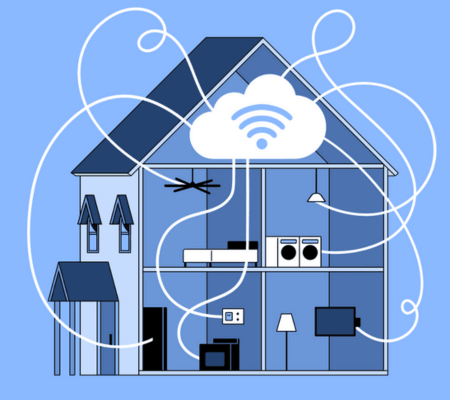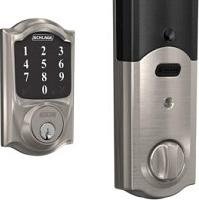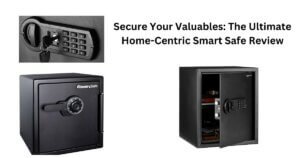As our homes become more connected and reliant on technology, it is essential to address key issues surrounding smart home security. Privacy concerns, cybersecurity risks, integration challenges, cost and accessibility, and ethical considerations are all significant concerns that need to be navigated in the digital age. By implementing regulations, stronger security measures, and promoting education and awareness, we can ensure a safer and more secure future for smart home technology.
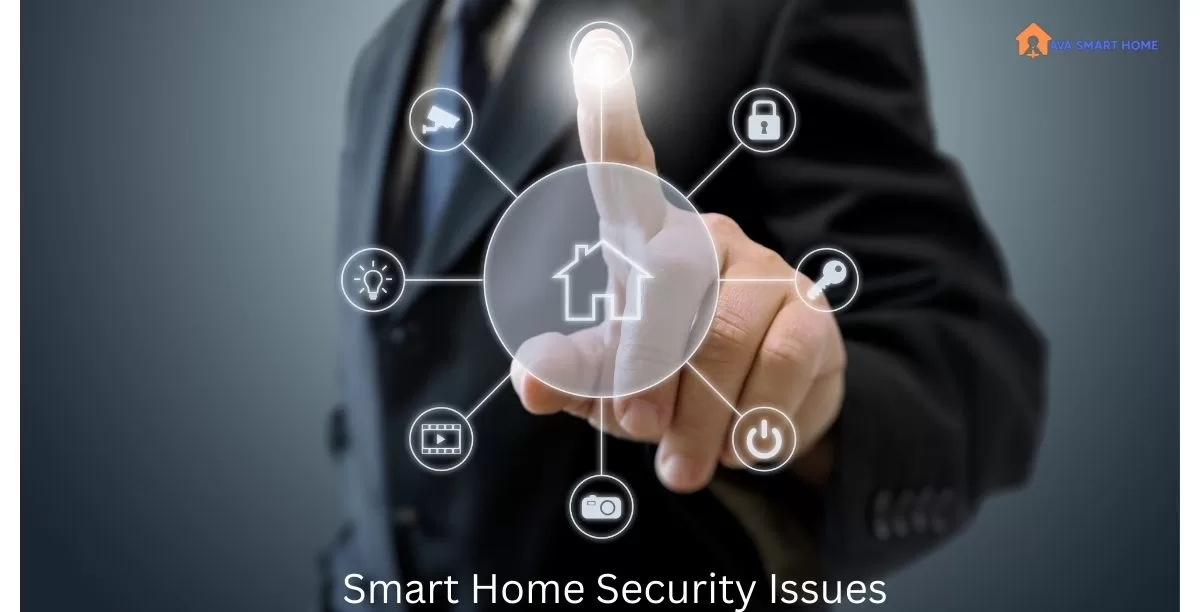
Table of Contents
ToggleSmart Home Security Issues
While we revel in these devices’ comfort and automation, we must not overlook the potential risks and vulnerabilities they can introduce into our homes. From hackers gaining access to personal data to unauthorized control over your appliances or even physical security breaches, various threats lurk behind those sleek interfaces.
This blog post will delve into some common security issues associated with smart home devices and explore ways to protect your connected haven from cyber attacks. So, let’s dive in and ensure your smart home remains a safe sanctuary for you and your loved ones!
Related: How to Protect your Home Without a Security System?
Potential Risks and Vulnerabilities
Smart home devices have undoubtedly made our lives more convenient, but they also have their fair share of risks and vulnerabilities. One of the biggest concerns is the potential for hackers to gain unauthorized access to these devices, compromising our privacy and security.

One vulnerability lies in the communication between smart home devices and their respective apps or control hubs. If not properly secured, this connection can be intercepted by malicious actors who can manipulate or exploit the device’s functionality.
Another risk comes from outdated software or firmware on these devices. Manufacturers often release updates that fix security flaws, but if users fail to install them promptly, their systems remain vulnerable to attacks.
Furthermore, some smart home devices may lack robust authentication mechanisms, making it easier for attackers to impersonate legitimate users and gain access without detection. Weak passwords are another common issue hackers take advantage of; strong passwords are essential in safeguarding your smart home network.
Additionally, there is a concern about data breaches where personal information collected by these devices could be stolen or exploited for malicious purposes. It’s crucial to carefully review privacy policies and ensure you’re comfortable with how your data will be handled before integrating new smart devices into your home.
To mitigate these risks and vulnerabilities, following best practices, such as regularly updating all connected devices’ software/firmware, is important. Implementing multi-factor authentication adds an extra layer of protection against unauthorized access attempts. Utilizing secure networks like VPNs when remotely accessing your smart home can bolster security measures.
In conclusion (not concluding), while enjoying the benefits of a smarter connected home environment is tempting, we shouldn’t overlook the potential risks that come along with it. By proactively addressing vulnerabilities and following recommended security practices for managing our smart homes effectively, we can create a safer digital living space for ourselves and our families.
Related: How to Protect Your House from Break-Ins?
Common Security Issues with Smart Home Devices
Regarding smart home devices, convenience, and connectivity are major selling points. However, along with these benefits come potential security risks that should not be overlooked. As technology advances rapidly, hackers and cybercriminals are becoming more sophisticated in their methods.
One common security issue is weak or default passwords. Many people fail to change their smart home devices’ default username and password, leaving them vulnerable to unauthorized access. It’s essential to set strong and unique passwords for each device and regularly update them.
Outdated Firmware or Software
Another issue is outdated firmware or software. Manufacturers often release updates that include important security patches. Failure to install these updates can leave your devices susceptible to known vulnerabilities.
Insecure Wi-Fi Networks
Insecure Wi-Fi networks also pose a significant risk. Hackers can access all the connected devices within your smart home ecosystem if your network is not properly secured. Always use strong encryption protocols like WPA2 for your Wi-Fi network and change the default SSID name and password.
Insufficient Authentication Mechanisms
Furthermore, insufficient authentication mechanisms can lead to unauthorized control over smart home devices. Implementing multi-factor authentication whenever possible, such as using biometric data or two-factor verification codes, is crucial.
Inadequate IoT Device
Inadequate IoT device management practices can create vulnerabilities in your smart home system. Ensure you only purchase devices from reputable manufacturers who prioritize security measures in their products.
By being aware of these common security issues with smart home devices, you can take proactive steps toward protecting your household from potential threats.
Ways to Protect Your Smart Home from Cyber Attacks
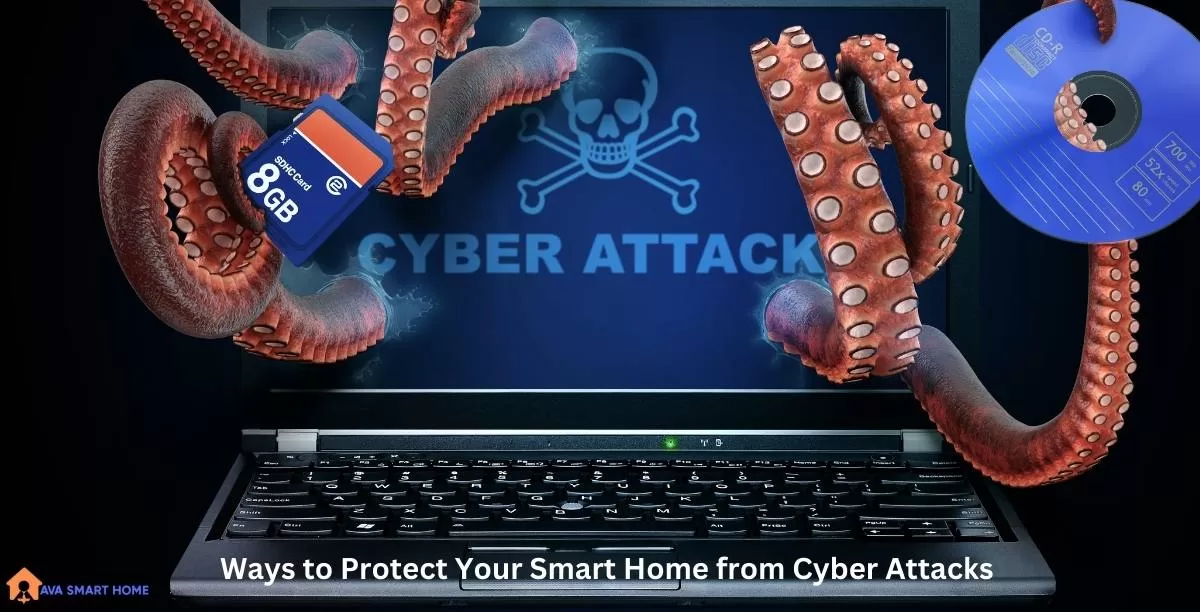
1. Secure Your Wi-Fi Network:
The first step in protecting your smart home is securing your Wi-Fi network. Change the default password and use a strong, unique password that includes a mix of letters, numbers, and special characters.
2. Update Firmware Regularly:
Manufacturers often release firmware updates for their smart devices to fix security vulnerabilities. Make sure to check for these updates and install them promptly and regularly.
3. Use Strong Passwords:
Implement strong passwords for your Wi-Fi network and each device connected to it. Avoid using common or easily guessable passwords like “password” or “123456.”
4. Enable Two-Factor Authentication (2FA):
Many smart home devices now offer two-factor authentication as an added layer of security. Enable this feature whenever possible to protect against unauthorized access.
5. Disable Remote Access Features:
If you don’t need remote access capabilities, consider disabling them on your smart devices, as they can be potential entry points for hackers.
6. Separate IoT Devices from Personal Devices:
Create separate networks or VLANs (virtual local area networks) to isolate your IoT devices from personal computers and smartphones.
7. Encrypt Data Transmissions:
Ensure all data transmitted between your smart home devices and the internet is encrypted using protocols like WPA2-PSK or SSL/TLS encryption.
8. Regularly Monitor Device Activity:
Keep an eye on any suspicious activity or unfamiliar connections in your device logs or monitoring tools provided by manufacturers.
9. Use a Firewall and Antivirus Software:
Install firewall software on your router and individual devices, along with up-to-date antivirus software, to provide additional protection against malware attacks.
Protecting a smart home requires ongoing vigilance and continuous education about emerging threats in the Internet of Things (IoT). Stay informed about best practices recommended by experts within the industry. By implementing these security measures, you can help ensure a safer and
Importance of Regular Updates and Maintenance
Regular updates and maintenance are crucial when it comes to ensuring the security of your smart home. With technology constantly evolving, staying up-to-date with the latest software patches and firmware updates for all your connected devices is essential.
One of the main reasons why regular updates are important is because they often include security fixes that address vulnerabilities discovered by manufacturers or cybersecurity experts. Neglecting these updates leaves your smart home susceptible to attacks from hackers who exploit these weaknesses.
Additionally, regular maintenance helps to optimize the performance of your smart home devices. Updates can improve functionality, enhance compatibility with other devices in your network, and even introduce new features that enhance convenience and productivity.
It is recommended to enable automatic updates whenever possible to ensure you don’t miss any critical updates or maintenance tasks. This way, you won’t have to check for updates on each device manually.
Remember that updating one device may not be enough—every connected device in your network should be regularly updated. This includes everything from smart locks and cameras to thermostats and voice assistants.
By prioritizing regular updates and maintenance for your smart home devices, you can significantly reduce the risk of cyber-attacks while enjoying a more secure and efficient living environment. Stay proactive in protecting your investment!
Best Practices for Secure Smart Home Management
Regarding managing your smart home, security should be your top priority. With the increasing number of connected devices, it’s important to take proactive measures to protect your home from cyber threats. Here are some best practices to ensure a secure smart home environment.
First and foremost, always change default usernames and passwords on all your smart devices. Default credentials are often easily accessible by hackers, so it’s crucial to create strong and unique passwords for each device.
Regularly update the firmware and software of your smart devices. Manufacturers frequently release updates that address security vulnerabilities, so install them promptly. This will help safeguard against potential exploits and keep your devices protected.
Secure your wireless network by using a strong password and enabling WPA2 encryption. This ensures that only authorized users can access your network, reducing the risk of unauthorized access to your smart devices.
Consider setting up a separate guest network for visitors or IoT devices that don’t require access to sensitive information. This way, even if one device is compromised, it won’t have direct access to other devices on the main network.
Implement multi-factor authentication (MFA) whenever possible. MFA adds a layer of protection by requiring additional verification beyond just entering a username and password. It could be through biometrics or receiving a code via text or email.
Regularly review permissions granted to third-party apps or services connected with your smart home system. Only allow necessary permissions and revoke any unnecessary ones immediately.
Invest in reliable antivirus software for all the computers or mobile devices associated with managing your smart home system. Antivirus software can detect malware or suspicious activities that may compromise the security of these devices.
Educate yourself about cybersecurity trends and stay updated on emerging threats to smart homes. Knowing potential risks can help you proactively mitigate them before they become major issues.
By following these best practices for secure smart home management, you can enjoy the convenience and comfort of a connected home.
Conclusion: Ensuring a Safe and Secure Smart Home Environment
As technology continues to advance, the integration of smart devices into our homes has become more prevalent. From voice-controlled assistants to automated security systems, these innovations offer convenience and efficiency like never before. However, with great power comes great responsibility.
Smart home security is an essential aspect that should not be overlooked. While these devices bring many benefits, they also have potential risks and vulnerabilities. Cyber attacks and privacy breaches have become all too common in today’s digital landscape.
Staying informed about the smart home security issues with these devices is crucial to protect your smart home from such threats. Weak passwords, outdated firmware, and unsecured Wi-Fi networks are some of the vulnerabilities that can leave your smart home susceptible to hacking or unauthorized access.
Fortunately, there are steps you can take to enhance the security of your smart home environment. Always use strong and unique passwords for each device connected to your network. Additionally, regularly update your devices’ firmware and the software on any associated apps or platforms.
Furthermore, consider implementing additional layers of protection, such as two-factor authentication, when available. This adds an extra verification level during login attempts and helps prevent unauthorized access even if someone manages to obtain your password.
Another important practice is being mindful of the permissions you grant when setting up new devices or connecting them to third-party services. Only provide necessary permissions and carefully review privacy settings on each device or app.
Last but certainly not least (is this word?), invest in quality antivirus software for all connected devices within your ecosystem – from smartphones to laptops – because securing every entry point into your network is vital for overall safety.
In conclusion (oops!), while smart home technology offers numerous advantages in comfort and convenience, we must prioritize safeguarding our personal information by adopting best practices for secure management. By staying vigilant about potential risks, regularly updating devices and software, and implementing strong security measures.

